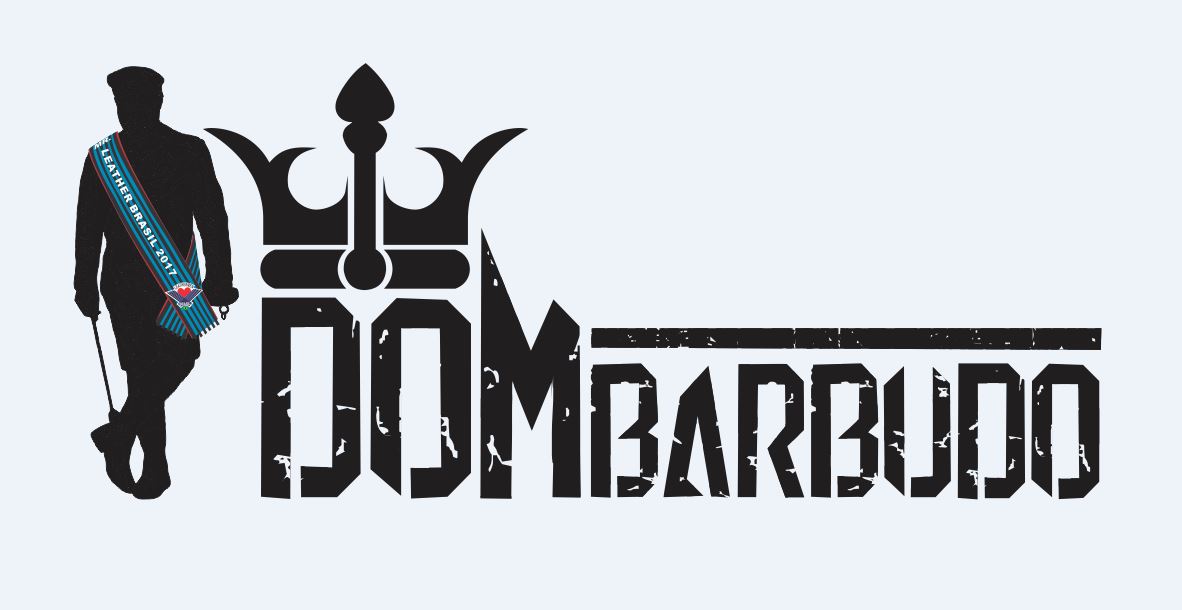📖 QUEBRA DE LIMITES
Categoria: Conceito
🔑 PALAVRAS-RELACIONADAS: extremidade, resistência, BDSM hard, submissão intensa, obediência absoluta, sadomasoquismo, superação, dominação extrema, teste de limites, entrega total.
🔠 DEFINIÇÃO:
O ato de ultrapassar barreiras físicas, emocionais ou psicológicas dentro de uma dinâmica BDSM, testando a resistência e aprofundando a entrega do submisso.
🔎 SIGNIFICADO:
A quebra de limites é um conceito avançado dentro do BDSM, onde submissos são levados a desafiar suas próprias barreiras para atingir novos níveis de entrega e obediência. Esse processo pode envolver testes de dor, resistência psicológica, privações sensoriais ou submissão absoluta à vontade do dominante.
Para muitos praticantes, a experiência de ultrapassar limites previamente estabelecidos gera uma sensação intensa de libertação, fortalecimento da confiança e aprofundamento da relação de dominação e submissão. No entanto, a quebra de limites deve ser feita com extrema responsabilidade, respeitando a comunicação e os sinais do submisso.
🔗 APLICAÇÃO:
Usado em sessões de BDSM extremo, treinamento de submissão e práticas que exigem alto nível de confiança. Pode incluir desafios físicos, psicológicos ou emocionais dentro da dinâmica D/s.
🧠 IMPACTO MENTAL, FÍSICO E EMOCIONAL:
Fisicamente, pode resultar em aumento da resistência à dor e maior tolerância a estímulos intensos. Mentalmente, pode expandir a percepção do submisso sobre seus próprios limites, gerando tanto prazer quanto desafios emocionais. Emocionalmente, pode criar laços profundos entre dominador e submisso, mas requer acompanhamento cuidadoso para evitar impactos negativos.
📢 RELAÇÃO COM OUTROS TERMOS:
Sadomasoquismo, resistência extrema, dominação absoluta, subspace, controle total, experimentação BDSM, submissão intensa.
🔒 SIMBOLOGIA E REPRESENTAÇÃO NO BDSM:
A quebra de limites simboliza a superação pessoal e a entrega incondicional dentro do BDSM. Representa um desafio tanto para o submisso quanto para o dominante, exigindo controle e respeito absoluto.
🤝 NEGOCIAÇÃO:
Antes de qualquer prática envolvendo quebra de limites, é essencial uma negociação clara. Definir palavras de segurança, estabelecer sinais não-verbais e garantir que a confiança entre as partes esteja sólida é fundamental para evitar riscos desnecessários.
💊 CUIDADOS ANTES E DEPOIS:
Antes da sessão, garantir um ambiente seguro e a preparação mental do submisso. Após a prática, fornecer aftercare adequado, incluindo suporte emocional, hidratação e recuperação física.
🚀 IMPACTO FINAL:
Ultrapassar limites é uma jornada de autoconhecimento e entrega, fortalecendo a submissão e aprofundando a conexão entre dominador e submisso.
✍️ EXTRA – 6 PERGUNTAS ESCLARECEDORAS – QUEBRA DE LIMITES
- Que tipos de limites costumam ser mais desafiadores de quebrar para um submisso?
🔸 Os mais difíceis geralmente não são físicos, mas psicológicos e emocionais. Vergonha, medo de falhar, resistência à obediência cega, medo do julgamento, repulsa inicial por certos fetiches ou o apego à própria dignidade. Quebrar esses limites exige mais do que dor — exige comando preciso, leitura emocional e controle total da mente do submisso. O corpo obedece rápido; o ego, não. - Qual a diferença entre ultrapassar um limite e violar um limite?
🔸 Ultrapassar um limite acontece quando há confiança, desejo e preparo emocional para ir além. É negociado, induzido e celebrado como crescimento. Já violar um limite é quebrar um acordo, ignorar sinais, ultrapassar sem consentimento emocional. A primeira aprofunda a submissão; a segunda destrói o vínculo. Um Dominador de verdade sabe a diferença entre conduzir à entrega e invadir sem permissão. - Todo submisso deve ser treinado para quebrar seus limites?
🔸 Não obrigatoriamente. Nem todo submisso busca extremos. Alguns querem obediência ritual, outros prazer físico, e há quem deseje entrega emocional sem práticas hard. Quebrar limites é uma ferramenta poderosa, mas deve ser usada apenas com quem sente tesão ou desejo em ser levado além do que consegue sozinho. Não é pré-requisito para ser um bom sub — mas é um caminho valioso para quem quer ir fundo. - Como um Dominador percebe quando o submisso está pronto para quebrar um limite?
🔸 Pela leitura corporal, pela ausência de resistência no olhar, pela forma como o sub aceita comandos duros sem reagir com negação ou medo paralisante. Quando o sub começa a pedir mais, mesmo sem dizer com palavras, ou quando suporta algo difícil e olha para cima com desejo e devoção, o Dominador sabe que o momento chegou. É uma questão de presença e autoridade real. - A quebra de limites pode levar o sub a estados alterados de consciência?
🔸 Sim. Quando feita de forma intensa e bem conduzida, pode induzir subspace profundo, sensação de desligamento do ego, euforia extrema, choro involuntário, tremores ou prazer puramente mental. Esses estados surgem quando o corpo é pressionado e a mente se rende. É onde o sub para de pensar como indivíduo e passa a existir apenas como objeto do Dominador. É forte. E viciante. - Quais os riscos de forçar uma quebra de limite sem preparação emocional?
🔸 O submisso pode entrar em pânico, rejeição, bloqueio emocional, trauma ou culpa pós-cena. Pode perder a confiança na relação, sentir-se invadido ou usado de forma destrutiva. A quebra de limites mal conduzida deixa marcas negativas, não positivas. Por isso, só se quebra um limite se houver alicerce emocional, domínio técnico e vínculo real. Se não houver isso, é abuso — não BDSM.

📖 LIMIT BREAKING
Category: Concept
🔑 RELATED WORDS: extreme BDSM, negotiated consent, psychological endurance, intense submission, absolute control, sadomasochism, transgression, total surrender, mental challenges.
🔠 DEFINITION:
A BDSM practice or dynamic that involves surpassing previously established limits within a consensual and negotiated context.
🔎 MEANING:
Limit breaking is an advanced concept in BDSM that involves expanding physical, mental, or emotional boundaries, often under the guidance of an experienced dominant. Unlike violating limits, which occurs without consent, limit breaking is an agreed-upon process where the submissive allows their boundaries to be tested and potentially surpassed in a controlled environment.
This practice may involve the introduction of more intense stimuli, exploration of new psychological dynamics, or pushing physical and emotional endurance under the absolute control of the dominant. For many, limit breaking represents growth, surrender, and a deepening of the power dynamic.
🔗 APPLICATION:
Used in submissive training sessions, psychological challenges, extreme practices, and deepening trust between dominant and submissive.
🧠 MENTAL, PHYSICAL, AND EMOTIONAL IMPACT:
Physically, it can push the body to the limits of endurance and arousal. Mentally, it requires a high level of control, trust, and surrender. Emotionally, it can generate liberation, euphoria, and a deep connection between participants.
📢 CONNECTION WITH OTHER TERMS:
Submissive training, psychological domination, sadomasochism, physical endurance, emotional impact, unconditional submission.
🔒 SYMBOLISM AND REPRESENTATION IN BDSM:
Limit breaking symbolizes total surrender, overcoming barriers, and absolute trust in the dominant. For many submissives, it represents a rite of passage and an affirmation of loyalty and devotion.
🤝 NEGOTIATION:
Communication before, during, and after the practice is essential. Pre-agreed flexible limits, safe words, and non-verbal signals ensure that the experience remains intense yet within a space of trust and respect.
💊 PRE AND POST-CARE:
Before the session, it is crucial to mentally and physically prepare the submissive for the proposed challenges. After the practice, aftercare is fundamental, including emotional support, hydration, and time to process the experience.
🚀 FINAL IMPACT:
When conducted responsibly, limit breaking leads to transformative experiences, expanding the submissive’s physical and emotional endurance while deepening their connection with the dominant.
✍️ EXTRA – 6 CLARIFYING QUESTIONS – BREAKING LIMITS
- What types of limits are the hardest for a submissive to break?
🔸 The most difficult limits are rarely physical — they’re psychological and emotional. Shame, fear of failure, resistance to full obedience, fear of judgment, disgust toward certain fetishes, or emotional attachment to dignity. Breaking these requires more than pain — it demands precise control, emotional reading, and full mental domination. The body submits quickly; the ego resists. - What’s the difference between breaking a limit and violating a limit?
🔸 Breaking a limit is done with trust, consent, and emotional readiness. It’s negotiated, intentional, and turns into a deep experience of growth. Violating a limit is breaking an agreement, crossing a boundary without the sub’s psychological consent. The first deepens submission. The second destroys the connection. A real Dominant knows how to lead without harming. - Should every submissive be trained to break their limits?
🔸 No. Not all submissives seek extreme surrender. Some want ritual obedience, others want physical pleasure or emotional intensity. Breaking limits is a powerful tool, but only for those who crave being taken further than they can go alone. It’s not a requirement for submission — but it is a sacred path for those who want total surrender. - How does a Dominant know when a sub is ready to break a limit?
🔸 Through body language, the absence of resistance in the eyes, and how the sub handles hard commands without panic. When a submissive starts asking for more without saying a word, or when they endure and look up with need and devotion, the Dominant knows it’s time. It’s about presence, timing, and authority. - Can breaking limits lead to altered states of consciousness?
🔸 Yes. When done intensely and correctly, it can induce deep subspace, ego loss, emotional release, involuntary tears, trembling, or mental orgasms. These states emerge when the body is pushed and the mind fully surrenders. The submissive stops existing as “self” and becomes pure property in the hands of the Dominant. It’s raw. It’s addictive.
What are the dangers of forcing limit breaking without emotional readiness?
🔸 The submissive can shut down, panic, feel violated, or fall into guilt or trauma after the scene. It can break trust, damage the relationship, or make the sub reject their submissive identity. Breaking limits without emotional foundation, technical skill, or real connection is not dominance — it’s abuse. And that has no place in real BDSM.







